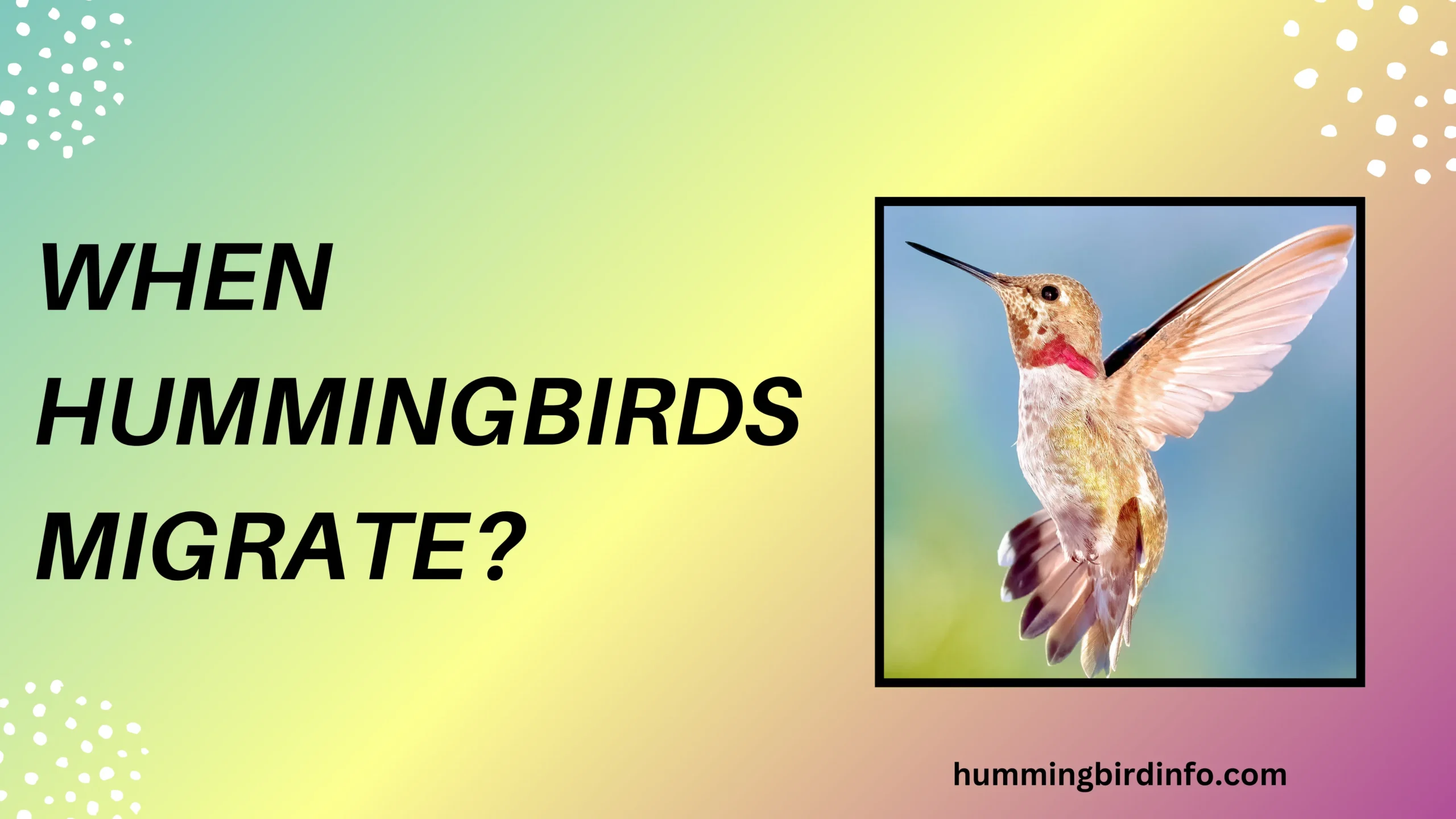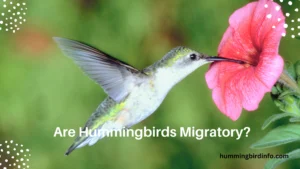Every year, tiny hummingbirds set off on a remarkable journey that spans thousands of miles, defying their small size and fragile appearance. These incredible travelers navigate vast landscapes, crossing forests, mountains, and even open water, driven by instincts older than human history.
The mystery of when and why hummingbirds migrate sparks curiosity, inviting us to explore their secret world of survival and adaptation.
Understanding the timing and triggers of hummingbird migration offers more than just fascination—it connects us to the delicate balance of nature. Their movements are tied to the rhythms of seasons, flower blooms, and changing climates, making them vital players in ecosystems.
As hummingbirds chase the warmth and nectar from south to north and back again, they highlight the fragile relationship between wildlife and environment.
In this article, we will journey alongside hummingbirds, diving into the details of their migration timing, routes, species differences, and the environmental cues that set their clocks. We’ll also uncover the huge energy demands of their flights and the many dangers they face.
This is a story of endurance, survival, and the extraordinary adaptations of one of nature’s smallest yet most resilient birds.
Contents
- 1 The Primary Migratory Hummingbird Species of North America
- 2 The Environmental Cues and Internal Clocks
- 3 The Energetic Costs and Strategies
- 4 Challenges and Conservation Concerns
- 5 Conclusion
- 6 FAQs
- 7 When do hummingbirds typically start migrating?
- 8 What triggers hummingbird migration?
- 9 How far do hummingbirds migrate?
- 10 Do all hummingbirds migrate?
- 11 How do hummingbirds prepare for migration?
- 12 What dangers do hummingbirds face during migration?
The Primary Migratory Hummingbird Species of North America
Ruby-throated Hummingbird (Archilochus colubris)
This eastern species begins its northward migration in early spring (April-May), arriving gradually from south to north.

In fall (August-October), they return south in reverse order. One of their most astonishing feats is the non-stop flight across the Gulf of Mexico, a stretch of nearly 500 miles over open water.
They rely on changes in day length and food availability to know when to migrate. Before departure, they enter hyperphagia, eating almost nonstop to build fat reserves. The trip is dangerous, with risks including storms, predators, and habitat loss along the way.
Rufous Hummingbird (Selasphorus rufus)
Known as the western long-distance champion, Rufous hummingbirds have a complex migration route. They travel north along the Pacific Coast (February-May) to Alaska and return south through the Rocky Mountains (July-October).
They are highly territorial at feeding stops, aggressively defending flower patches to fuel their energy-intensive trip. Their journey is demanding, requiring stamina and careful resource management. Habitat degradation threatens key stopover sites.
Allen’s Hummingbird (Selasphorus sasin)
Allen’s hummingbirds have a distinct elliptical migration pattern. They breed along the California coast in spring and summer, then migrate south through mountains and valleys in late summer and fall.
Their coastal breeding range is limited, making them vulnerable to habitat loss. Like others, they time their migration based on day length and flower blooms, relying heavily on coastal and mountain nectar sources.
Calliope Hummingbird (Selasphorus calliope)
The smallest migratory hummingbird, Calliope, travels to high-elevation breeding grounds in spring (April-May). Their southward journey starts in late summer (July-September), passing through mountainous western regions.
Their migration is finely tuned to the blooming of alpine wildflowers, and they feed in meadows and forests. Conservation of mountain habitats is critical for their survival.
Black-chinned Hummingbird (Archilochus alexandri)
Found in the western and central U.S., Black-chinned hummingbirds migrate north in spring (April-May) and south by late summer (August-September). They breed in diverse habitats and winter mostly in Mexico. Photoperiod and nectar availability signal their migration.
They often forage in riparian zones and gardens. Habitat loss and pesticides are major threats across their range.
The Environmental Cues and Internal Clocks
Hummingbirds rely heavily on photoperiod, the changing length of daylight, which acts as a reliable signal to begin migration. Specialized brain receptors detect these subtle changes, preparing the birds for their journey.
As days shorten in late summer, decreasing temperatures also warn of fewer food resources ahead.
The availability of nectar and insects plays a major role. As flowers stop blooming and insect numbers drop, hummingbirds feel the pressure to move. This natural cycle helps them time their departure to maximize chances of survival.
Inside their bodies, hummingbirds follow an internal circannual clock, a biological calendar that triggers physical changes like fat buildup and migratory restlessness called Zugunruhe. Hormones such as melatonin influence these rhythms, coordinating the timing with environmental signals.
Genetics also shape when and where each species migrates, fine-tuning their routes and schedules over generations.
The Energetic Costs and Strategies
Migration demands extreme energy from hummingbirds due to their fast wing beats and hovering flight. To prepare, they enter a phase of hyperphagia, doubling their body weight with fat. This fat acts as fuel for long flights, especially for non-stop crossings like the Gulf of Mexico.
Some hummingbirds use torpor, a short-term state of lowered metabolism, to conserve energy during cold nights or when food is scarce. This ability helps them survive harsh conditions en route. Their migration paths often follow blooming flowers, allowing frequent stops to refuel and maintain energy.
Challenges and Conservation Concerns
Hummingbirds face many dangers during migration, including habitat loss from urbanization and agriculture. Fragmented landscapes reduce available stopover sites essential for resting and feeding. The use of pesticides cuts insect populations, a vital protein source during breeding and migration.
Climate change disrupts the timing of flower blooms and insect emergence, potentially causing mismatches with hummingbird migration. Collisions with windows, communication towers, and wind turbines pose additional threats during flight.

Efforts to protect hummingbirds include habitat restoration, reducing pesticide use, and creating safe migratory corridors. Public awareness and research are vital to ensure these tiny travelers continue their epic journeys for generations.
Conclusion
Hummingbird migration is a complex and fascinating process shaped by a delicate balance of environmental cues and internal biological rhythms. Each species follows unique routes and timing, reflecting adaptations to their specific habitats and needs.
The incredible energy demands, combined with threats from habitat loss, climate change, and human-made hazards, highlight the urgency for conservation efforts. Protecting these tiny migrants means preserving the ecosystems they depend on, from breeding grounds to wintering habitats.
The next time you see a hummingbird flitting by, remember the extraordinary journey it undertakes—an inspiring story of endurance, adaptation, and the natural world’s intricate rhythms.
FAQs
When do hummingbirds typically start migrating?
Most hummingbirds begin migrating in early spring (March-May) northward and return south in late summer to early fall (August-October) depending on the species.
What triggers hummingbird migration?
Changes in day length (photoperiod), temperature drops, and declining food availability are the primary triggers.
How far do hummingbirds migrate?
Distances vary by species; for example, the Ruby-throated hummingbird can fly up to 500 miles nonstop across the Gulf of Mexico.
Do all hummingbirds migrate?
No, only certain species migrate. Some hummingbirds live year-round in tropical areas with stable climates.
How do hummingbirds prepare for migration?
They undergo hyperphagia, eating heavily to build fat reserves that fuel their long flights.
What dangers do hummingbirds face during migration?
Major threats include habitat loss, predation, weather challenges, pesticide exposure, and collisions with man-made structures.








